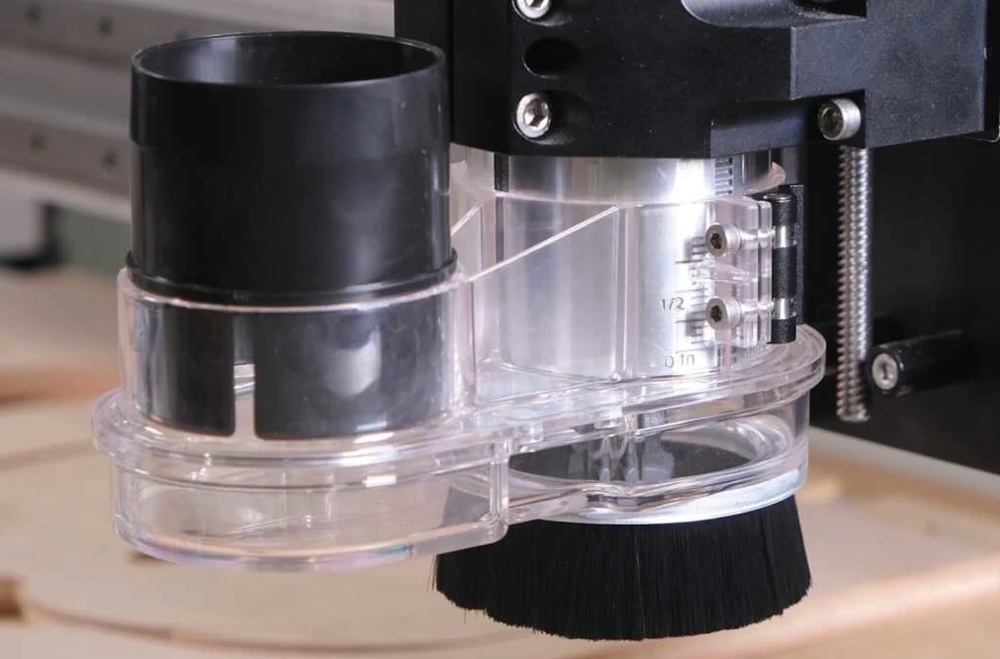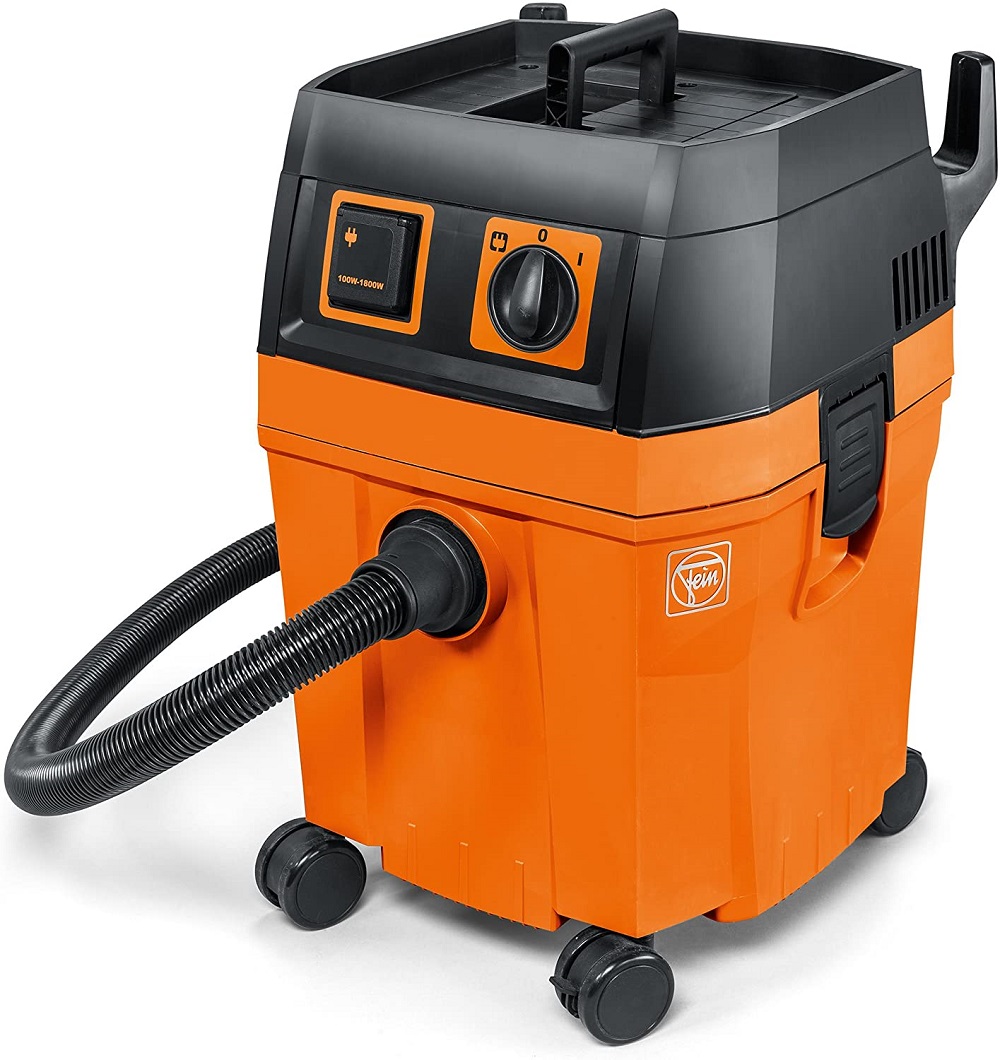Guide to CNC Dust Collection
Discover effective dust collection solutions for CNC routers to enhance safety, efficiency, and performance. Learn about different types of dust, health risks, essential components, and best practices for optimal dust collection in CNC.
Introduction
Dust collection is crucial for CNC routers due to its impact on the safety, efficiency, and longevity of both the equipment and its operators. CNC routing processes generate significant amounts of dust and chips from various materials like wood, plastic, and metal.
Health Risks
This dust, if not effectively managed, can pose serious health risks such as respiratory problems, allergic reactions, fire hazards, and slip-and-fall accidents. (If you've ever walked through a floor covered in HDPE chips, you'll understand that last point)
Machine Care
Dust accumulation can lead to equipment malfunction, reduced accuracy, and increased wear and tear, negatively affecting the overall performance and lifespan of the CNC router.
There are many areas in a CNC machine for dust and debris to collect. We've seen more than one CNC router end up non-functional because the owner lets dust collect and get packed into sensitive mechanical areas.
By investing in an effective dust collection system, users can maintain a clean and safe working environment, increase productivity, and extend the life of their CNC equipment.
Running a CNC router without proper dust collection is a recipe for failure.
Shop Cleanliness
A good CNC router can generate a lot of chips and dust, and the more powerful the machine, the further it's going to distribute those chips through your shop. You're going to have to clean it up no matter what, so it's better to get as much of it right out of the cut, before it ends up in every corner.
Finally, if you're making money in your shop, a tidy shop also creates a professional image, fostering trust and confidence among clients and employees.
Dust Collection System Overview
A dust collection system consists of a number of parts:
- Dust boot or Dust Shoe
- Vacuum Hose
- Dust Separator
- Shop vac or Dust collector
Dust Shoes and Dust Boots
A dust boot is a contraption that holds the end of the vacuum hose very close to the cut. Rather than simply holding the hose in place, a dust boot surrounds the cutting tool so it can get as much dust as possible.

A dust boot is closely connected to the CNC machine, or spindle, it was made for. For instance, our Sweepy dust boot is available in three different sizes, each for a different spindle diameter.
Dust boots usually come with a strip brush around the cutting area to better direct the vacuum airflow into the cut so that most of the dust is collected before getting flung into the shop.
What to look for in a dust boot
Dust boots and dust shoes are not complicated, but they need to be well-designed.
Good airflow - The entire point of a dust boot is to redirect the airflow from the hose to the cut as efficiently as possible. A good dust boot should not restrict the airflow to the point that it becomes the limiter to chip evacuation.
Removable base - Since the dust boot surrounds the cutter, it needs to be easily removable when you need to get access to the cutter. For our Sweepy system, we use several magnets to hold the brush section in place during use, but easily removable for a tool change.
Good visibility - Ideally, you want to be able to see the cutter in action so that you can see any problems that come up. There are boots made from metal or 3D-printed plastic that make visibility almost impossible. For Sweepy, we made the whole thing from clear polycarbonate to get as much visibility as possible.
Vacuum Hoses
It's tempting to use any hose that comes with your vacuum with your CNC machine but that's not a great idea. When air and debris are moving through a plastic hose, the result is static electricity. If you build up enough static, it will discharge, and it's possible that it will end up in your machine's control system. To avoid this, you should always use a grounded vacuum hose.
Grounded hoses are expensive, but it's worth the expense to make your CNC machine run more reliably. While we'd always recommend using a grounded hose, it's also possible to wrap a copper wire around your normal hose as a less effective way to dissipate some of that static charge. We've got more about that here.
The next question becomes, "where should I ground my hose to?" That's a question that should be answered by the manufacturer of your CNC machine. We think it's such an important consideration that we have a dedicated grounding block on the machine just for dust collection systems on our Shapeoko 5 Pro CNC Router.
Vacuums and Dust collectors
For the vacuum itself, you have two options, a shop vac, or a dedicated dust collector. Generally speaking, we'd recommend that you use whatever you already have.
Shop vac
Shop vacs are cheap and ubiquitous; almost everyone has one, so they're a convenient way to go. They're also available with HEPA filters to remove even fine particles from the exhaust air. The biggest problem with using a shop vac is that the cheapest models are loud and not necessarily made to run continuously for hours at a time.

We use better brands, like Fein and Festool, in our shop exclusively, and they work really well.
If you choose to use a shop vac, we'd recommend adding a dust separator, like a Mullet Cyclone Dust Collector, to remove the biggest chips before they end up in the shop vac itself. Long term, this is a much easier way to collect and dispose of chips.

Dust Collector
Dust collectors are very popular in the woodworking industry. They're typically quieter than a shop vac, can hold larger quantities of chips, and the are capable of very high flow rates. The best dust collectors come with a filter on the exhaust, rather than just blowing the air through a cloth bag.

Dust collectors are usually made of metal, making them easier to ground to eliminate problems with static electricity.
In a production shop, a dedicated dust collector is a better option, even though they cost more and take up more space.